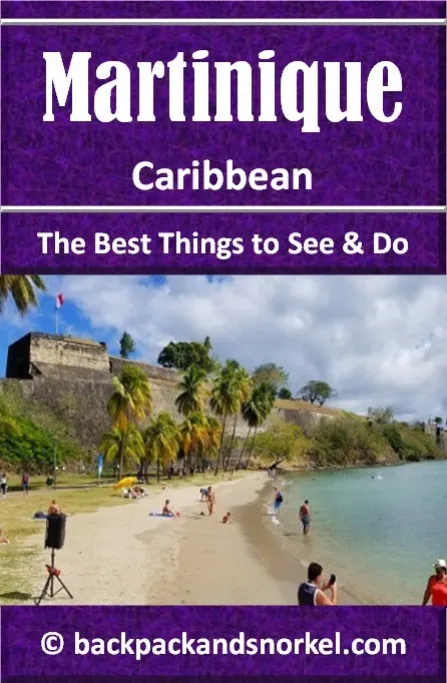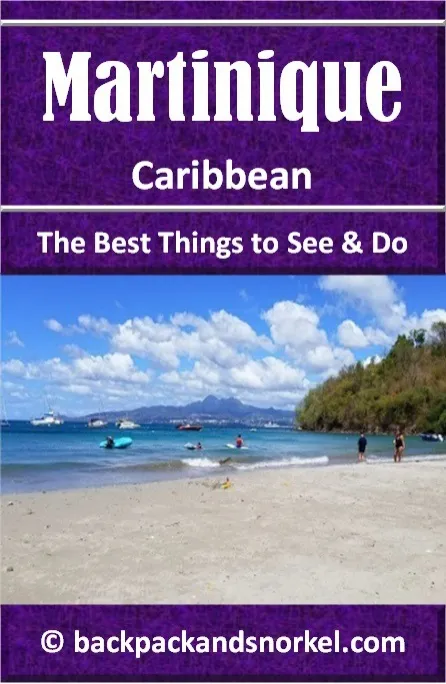Travel Guide for a cruise to Martinique - Martinique Purple Travel Guide
Martinique is a beautiful Caribbean island that is infrequently visited by cruise ships. We tell you how to discover the beaches and historic sites in Martinique and we provide lots of photos so you understand what you will see when you visit Martinique.
The information on this page and much more (google maps locations, more reviews, website links, etc.) is available in our Cruising the Caribbean Guide.
General Information about Martinique
Martinique is a Caribbean island which belongs to France and the primary language is French, but almost the entire population also speaks Antillean Creole, and the currency is the Euro. Locals call the island "Madinina". The population is approx. 375,000.
Christopher Columbus charted the island in 1493, and only landed here on June 15, 1502. At that time, this island which was called "Jouanacaëra-Matinino" with Jouanacaëra meaning "the island of iguanas". Columbus called the island as Martinica, which later became Martinique.
After being expelled off St. Kitts by the English, on September 15, 1635, the French governor of the island of St. Kitts and 150 French settlers landed on Martinique and claimed the island for the French King.
It did not take long for the indigenous Caribs to rise against the settlers in 1636, but the French successfully repelled them. When the Carib revolted against French in 1658, the French killed and of them and expelled the survivors to Dominica and St. Vincent.
Martinique has changed hands several times between France and England.
England traded Martinique back to France after the Napoleonic Wars and the island has remained under French possession since then.
When Mont Pelée erupted May 8, 1902, it completely destroyed the capitol city of St. Pierre and killed 30,000 people. The only survivor in the town of St. Pierre was Auguste Cyparis who was saved by the thick walls of his prison cell. After the eruption, the capital was moved to Fort-de-France, where it still remains today.
Climate in Martinique
Martinique has a tropical rainforest climate with very warm to hot and humid weather all year long. There is rain all year, but July through November are the rainiest months and hurricanes are a threat.
The climate that you can expect during your trip to Martinique is shown here:
Anse-A-L'Ane and Anse Mitan are particularly easy to get to, as you can take a ferry near the cruise port.
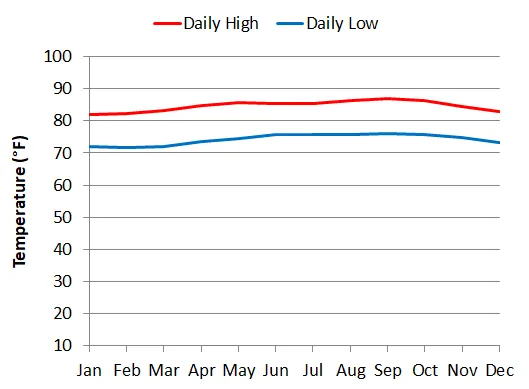
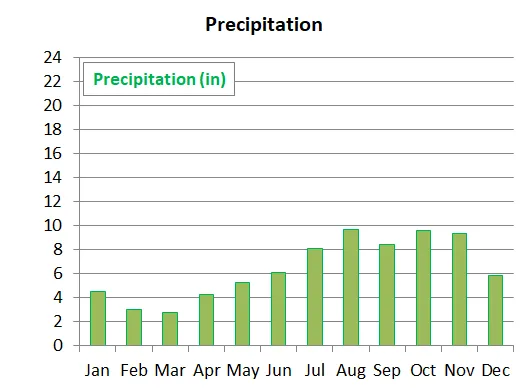
Best things to see and do in Martinique
Martinique's beaches pale in comparison to beaches on most other Caribbean islands. They are not bad, but just not as nice as on other islands. The three best beaches on Martinique are Anse Dufour, Anse-A-L'Ane and Anse Mitan. Anse Dufour is particularly dificlut to get to. You will either need to hire a taxi and hope that they pick you up in time to get back to your cruise ship, or get a taxi to the airport, rent a car and drive to Anse Dufour.
Fort-de-France is an interesting city and for cruise ship passengers it is nearly impossible to combine a walkin g tour of Fort-de-France with Anse Dufour.
Anse-A-L'Ane and Anse Mitan are particularly easy to get to, as you can take a ferry near the cruise port. Both beaches are served by the same ferry - take note to understand with beach is the first and which is the second stop as this sometimes changes.
Both beaches are fairly similar and none is clearly better. We prefer Anse-A-L'Ane, but that is a personal preference.

Self-guided walking tour of Fort-de-France

- Cruise Port
- Plage de la Française
- Fort Saint Louis
- La Savane Park
- Bibliothèque Schoelcher
- St. Louis Cathedral
- Ferry Pier
Plage de la Française and Fort St-Louis
Fort St-Louis is a short walk away from the cruise port. Before you get to the fprt, take a look at Plage de la Française. This is the closest beach to the cruise port.
Originally built in 1637 as a wooden fort, it was enlarged in 1640 and became Fort St-Louis. Today, it I a French naval post which can be visited Monday through Saturday from 9am – 3pm. The fort was closed when we were there, so we only got to enjoy the majestic exterior.
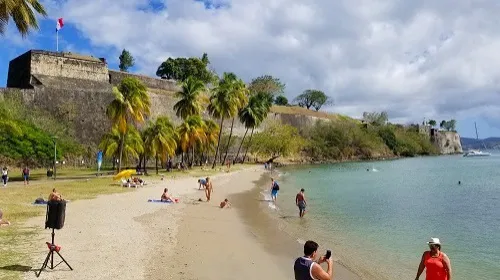
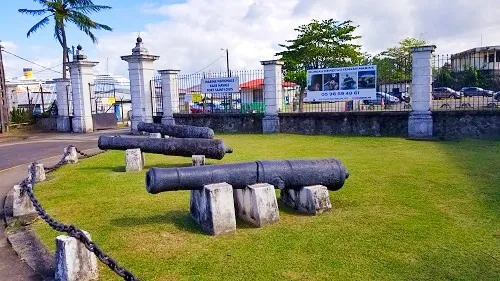
La Savane Park
A few feet away from the fort is the park La Savane. To the West of the park are souvenir and food stores that cater to tourists. There a couple of statues, like the one of Empress Josephine, first wife of the Napoleon Bonaparte, and the one of Pierre Belain d'Esnambuc, who established Martinique’s first French settlement in 1635.

Bibliothèque Schoelcher
To the North West of the park is Bibliotheque Schoelcher. This building in Byzantine-Egyptian-Romanesque style was designed in 1889 for the Paris Exposition by Henri Pick who was the architect of the Eiffel Tower. In 1890 it was taken apart and shipped to Martinique to house the extensive book collection of Victor Schoelcher. Schoelcher was appointed under-secretary of the navy in 1848 and elected to the legislative assembly in 1848 and 1849 for Martinique. He is best known for his devotion to the abolishment of slavery around the world. Bibliotheque Schoelcher is still operating as a public library.
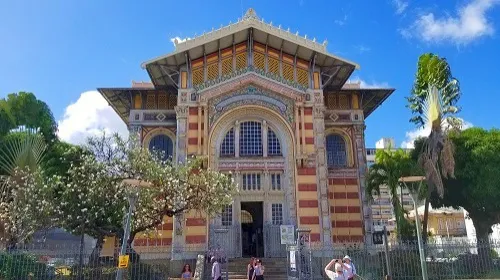
St. Louis Cathedral
A few blocks to the South West lies St. Louis Cathedral with its white and blue façade. This baroque church was also designed by Henri Pick. Several former governors of Martinique are buried here.
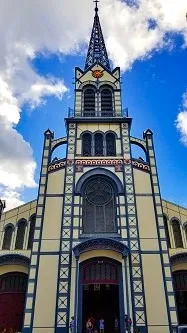
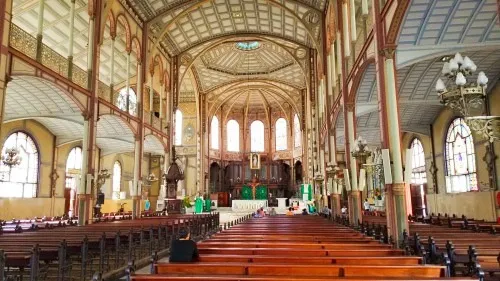
Here are some more photos:
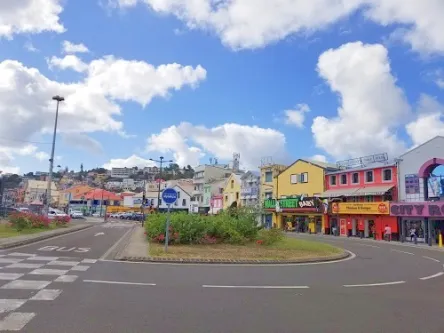
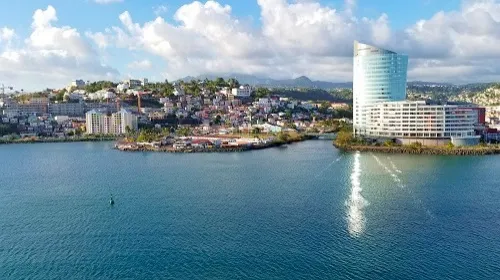
Ferry to Anse-A-L'Ane
Just a few hundred feet to the East of the cruise terminal is the ferry terminal. Here you can take a ferry to Anse Mitan and Anse-a-L’Ane. Both beaches are served by the same ferry. Take note which beach is the first stop and which is the second, as this sometimes changes. The ferry is a quick, reliable and affordable way to get to Trois-Ilets. It stops at a dock right at the beach.
The sandy beach itself is bordered by forested hills to the right and left, it has a couple of buildings on it and a nice view of Fort-de-France across the bay. Swimming and snorkeling are good.
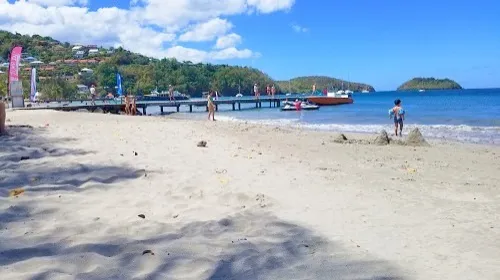

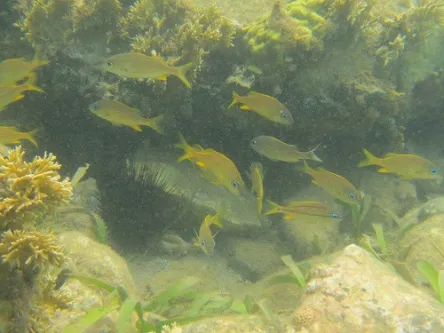
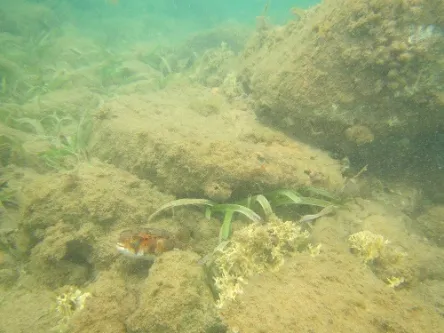
Street Art
Did you know Martinique has some beautiful street art?

Author: Rudy at Backpack and Snorkel
Bio: Owner of Backpack and Snorkel Travel Guides. We create in-depth guides to help you plan unforgettable vacations around the world.
Other popular Purple Travel Guides you may be interested in:
Like this Backpack and Snorkel Purple Travel Guide? Pin these for later:
